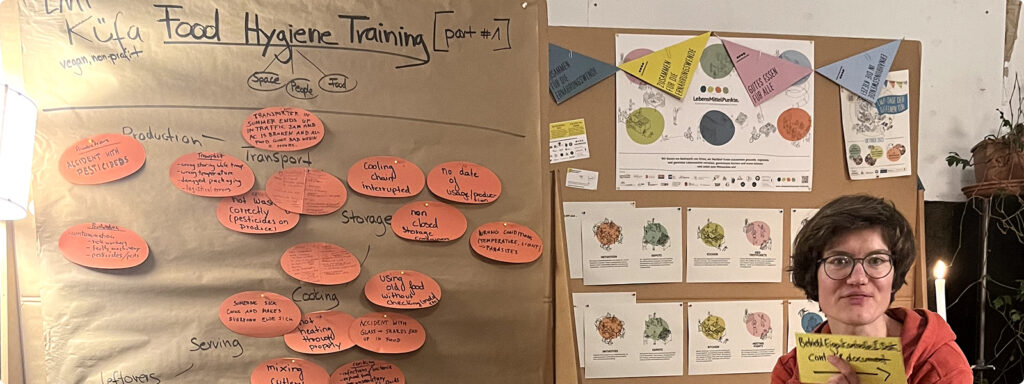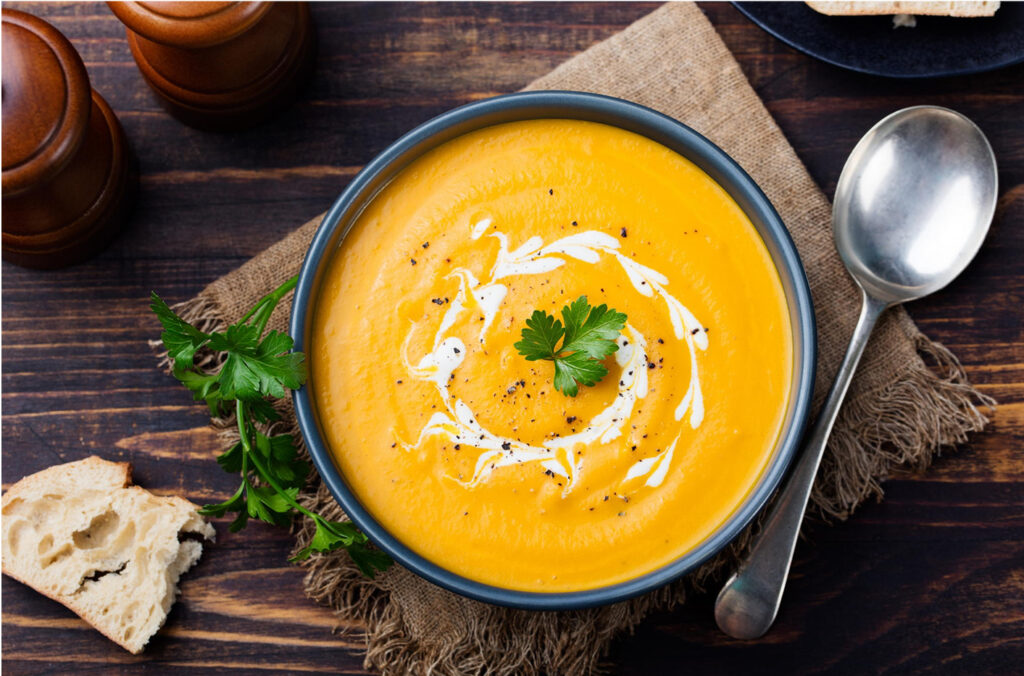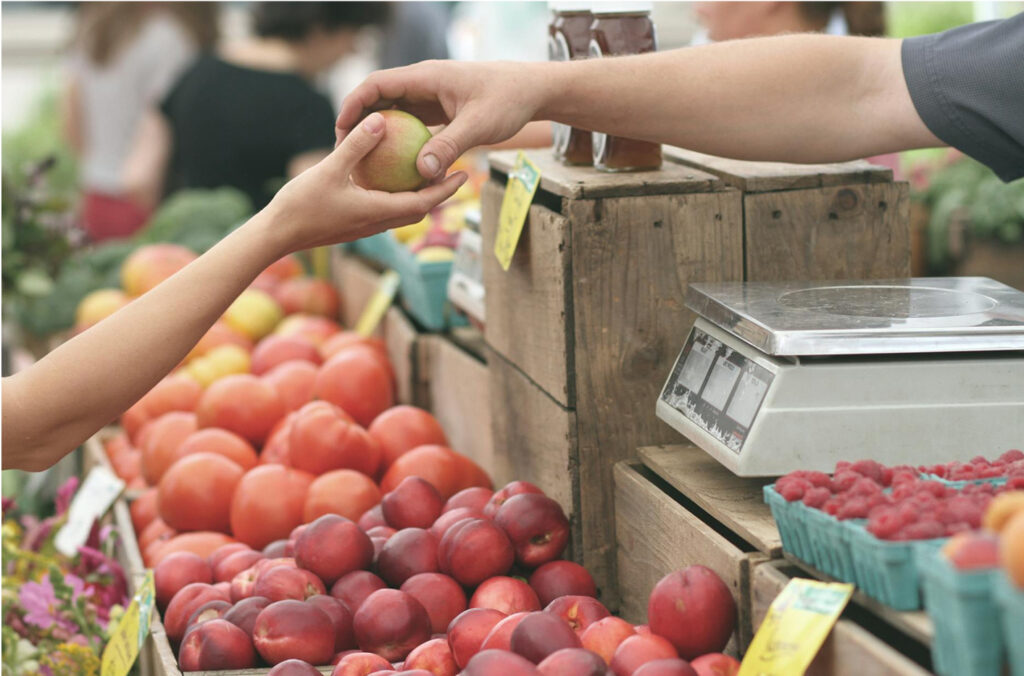november 23, 2023
5 Hygiene Rules
What we learned at the Baumhaus hygiene workshop.

Photo from ToKoKo
At the Torhaus Koch-Kollektiv (ToKoKo), we aim to create delicious, sustainable, and inclusive meals for our community. But ensuring the safety and quality of our food is just as important. Recently, some of our members attended a Hygiene workshop at Das Baumhaus, hosted by the LebensMittelPunkt (LMP) team. The workshop covered essential hygiene practices for food preparation, and we’re excited to share the top five takeaways that will help us make every KüFa not only enjoyable but also safe for everyone.
1. Hygiene Across the Chain: From Production to Serving
Food safety isn’t just about cooking—it’s about every step in the chain: Production → Transport → Storage → Cooking → Serving → Leftovers.
Here’s what we learned:
- Stay healthy: Don’t prepare or serve food if you’re feeling unwell.
- Store food properly: Correct storage temperatures prevent bacteria and pests.
- Label for allergens: Clearly communicate allergy risks.
- Cook safely: Heat food thoroughly to kill bacteria.
- Wash your hands: This simple step eliminates 99.9% of bacteria.
👉 Pro Tip: Handwashing is your first and strongest defense against contamination—don’t skip it!
2. Understand Perishable Foods and Cross-Contamination
Some foods are riskier than others. While we don’t use meat or dairy in our KüFas, we’re careful with leftovers and pre-prepared items like sauces or salads. These have shorter shelf lives than fresh fruits and vegetables.
- Optimum freezer temperature: Keep frozen products at -25°C to -18°C to ensure freshness.
- Prevent cross-contamination: Always store and handle food with clean utensils and follow strict separation of clean and dirty zones.
3. Official Hygiene Guidelines in Germany
During the workshop, we reviewed key regulations, including the Infektionsschutzgesetz (Infection Protection Act) and the need for certified food handlers at KüFas. If you’re part of the cooking crew, it’s recommended (and in some cases required) to get your Rote Karte—an official hygiene certificate issued by the health department.
- Why is it called a Rote Karte? It’s named after the pink paper it’s printed on!
4. Tools to Stay Organized: Hygiene Checklists
Checklists are lifesavers in a busy kitchen. At the workshop, we explored some of Das Baumhaus’s templates for food hygiene management:
- Incoming food: Always label and store food using the FIFO system (First In, First Out).
- Temperature checks: Regularly monitor storage temperatures to avoid spoilage.
- Cleaning plans: Create a routine schedule to keep the kitchen and tools spotless.
These systems ensure that no detail is overlooked, making it easier to stay on track.
5. Essential KüFa Hygiene Rules at a Glance
To keep everything running smoothly, we’ve compiled the most critical rules for our KüFas:
- 🧼 Wash your hands frequently.
- 🧹 Separate clean and dirty areas.
- 🍴 Use clean spoons for tasting.
- 🛑 Add allergy signs when serving.
- 🔪 Handle sharp knives with care.
- 🤒 If you’re sick, stay out of the kitchen.
Looking Ahead
Thanks to this workshop, more ToKoKo members are trained in food hygiene practices, ensuring that our meals are as safe as they are delicious. We’ll be implementing these learnings in upcoming events.
Want to learn more or get involved? Join us at our next event and taste the difference that hygiene brings to the table!
Source: Metro HACCP Guidelines
Let’s cook, learn, and share!


